22 Nights / 23 Days
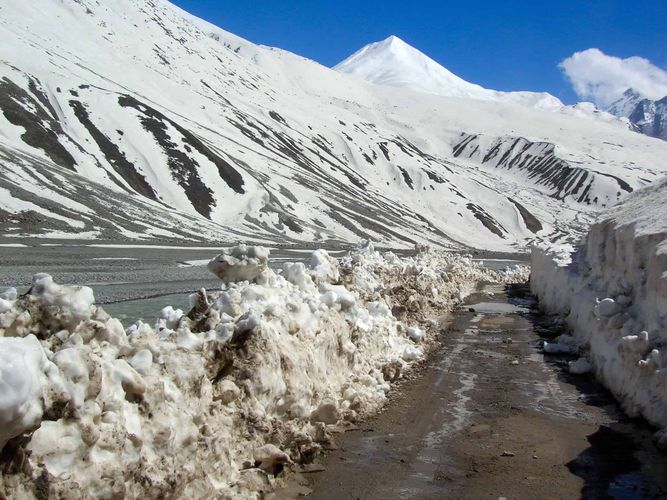
Arrive Delhi at international airport, meet and transfer to Hotel.
New Delhi, the capital and the third largest city of India is a fusion of the ancient and the modern. Standing along the West End of Gangetic Plain, the capital city, Delhi, unwinds a picture rich with culture, architecture and human diversity, deep in history, monuments, museums, galleries, gardens and exotic shows. Comprising of two contrasting yet harmonious parts, the Old Delhi and New Delhi, the city is a travel hub of Northern India. Narrating the city's Mughal past, Old Delhi, takes you through the labyrinthine streets passing through formidable mosques, monuments and forts. The imperial city of New Delhi displays the finely curved architecture of British Raj.
Later visit Old & New Delhi such as Jama Masjid, Red Fort, Lotus Temple, Qutub Minar, Humayun's Tomb, Akshardham Mandir, India Gate, etc.
Stay overnight at Hotel
Next day catch the Express Train to Chandigarh, upon arrival at Chandigarh and from there drive to Manali. Manali is the northern-most town of Himachal Pradesh's Kullu Valley. Situated on the national highway that leads to Leh, Manali is also the gateway to the remote and desolate valleys of Lahaul and Spiti. According to Hindu legend, it was named after the sage Manu after he steered a boat of survivors to safety here during a great flood. In present times, the town was first 'discovered' by the hippies of the 70s and 80s. Later, in the 90s, domestic tourism to Manali got a fillip owing to insurgency in Kashmir. It caught the public's imagination and was soon a legitimate boomtown, eventually growing far beyond its original village size
On Arrival at Manali Check in at Hotel
Rest for Day at Leisure
Overnight at Hotel
Morning breakfast at Hotel drive to explore Manali.
Hadimba Temple: The Goddess Hadimba is revered in this area. She was the sister of the demon Hadimb who ruled the mountains and was feared by all. When Bhima, the Pandava brother met her, he fell instantly in love and wanted to marry her. But he had to kill her brother first. After the death of her brother, Hadimba proved to be a good queen. She was fair and loved by all. She finally went to the woods called Dhungri Van Vihar to spend her last years in mediation and it is at this spot that the Hadimba temple was built. Also known as the Dhungri temple, it is a wooden four-storey structure and is built in the pagoda style. It looks almost like something out of a Japanese painting. You won't find an idol in the temple, just a foot print on a stone. The temple was built in 1553 and is an important one in this area. An interesting but macabre story surrounds this temple. Apparently the king who commissioned this temple was so awestruck by its beauty that he ordered the artist's right hand cut so he wouldn't be able to repeat his masterpiece. The artist determined not to sacrifice his craft, trained his left hand to carve and built a bigger and more beautiful temple in Chamba. The people in Chamba were so happy with his new creation that they beheaded him, lest he build another temple. Over the years Hadimba became the patron Goddess of the Rajas and the goddess's blessings had to be taken before every coronation and a buffalo sacrificed after each one. Today, the Dussehra celebrations commence with the blessing of the ceremonial horse by the goddess in a ceremony called 'ghor pooja.'A huge fair is also held at the temple on 14th May to celebrate her birthday. Rice beer or 'longri' flows like water and both men and women drink, dance and celebrate all night.
Rahalla Falls: Beyond which is the Rohtang Pass, 51 kms from Manali. Located at a height of 3980 m, the Pass once served as a crucial trade route, and still remains the gateway to the districts of Lahaul and Spiti.The Pass is open from June to November each year, and provides wonderful views of the entire surroundings. Just beyond the Pass is the Sonapani Glacier and the twin peak of Gaypan. The Beas Kund, the source of the Beas river, a holy site for Hindus, as the sage Vyas is said to have meditated at this spot, is also accessible from the Rohtang Pass. Rani Nullah, below Rohtang Pass. Height 3700m. Rani Nullah is shortly before the Rohtang Pass into Lahaul, at about 55km from Manali. The take-off area itself is not great as there are sharp stones to snag your lines on, but even if there is no lift it offers great 'sled-ride' flying, especially for beginners. There is a vast landing field at the truckstop at Marhi about 400m below take-off, though be warned that at over 10,000ft a HUGE flare is needed on landing - you come in like an express train! If you have reasonable height above Marhi it is a 10km sled-ride down to other landing fields at Kothi at the foot of the pass.
Monasteries: Manali also houses three Tibetan monasteries that have been built recently. There are three recently built Tibetan monasteries at Manali.
Vashisht (3 kms): Three kms from Manali is the village of Vashisht, which is renowned for its hot sulphur springs. The village is also the site of some old temples, dedicated to the great sage Vashisht, and to Lord Rama. The Himachal Tourism sulphur baths are just beyond these shrinesStay
Overnight at Hotel.
Morning drive by jeep over 3978 Rohtang pass, gateway to Lahaul, then continue by jeep over 4358 meter Kunzam La to Losar, the first village in the Spiti valley. Losar village is worth a visit being the first big village and because of its Location. Yak and horse riding are other charms to add to its beauty and unique experience. Being the last habitude spot, the population of this village is about 242. There are four shops, a school, a Post Office and a Health Centre in the village.
Overnight stay at Camp
Morning you continue your journey by jeep to Kaza, the modern capital of Spiti. Kaja is the subdivisional headquarters of the remote Spiti Valley valley in the Lahul and Spiti district of the state of Himachal Pradesh in the Western Himalayas of India. Spiti, which is a part of the Lahaul and Spiti district of Himachal, is a high altitude desert having close similarities to the neighbouring Tibet and Ladakh regions in terms of terrain, climate and the Buddhist culture. Kaza, situated along the Spiti River river at an elevation of 3,800 metres (12,500 ft) above mean sea level, is the largest township and commercial center of the valley
Overnight at Camp
Drive by jeep to Dhankar fort, Dhankar Lake lies 25 km from Dhankar in Lahaul and Spiti District, Himachal Pradesh. It is a blue-green lake located at an elevation of about 4,300 m. Surrounded by pink-brown hills, the lake offers a perfect idyllic camping site. Nearby tourist destinations include Dhankar Fort, Attargo, Dhankar Monastery, Serkhang, Mane Monastery, Kye Monastery the former capitol of Spiti, high above the confluence of the Pin and Spiti rivers. Then continue to Tabo Gompa, one of the greatest artistic treasures in the Himalayan region, to view its paintings and sculptures, some of which are over 1000 years old. This has been declared as a protected monument. It was built in ad 996 by Ringchen Zangpo and has been declared as the place where the current Dalai Lama will retire. Its sculptures, stucco images and wall paintings are similar to the Ajanta-Ellora paintings. It is situated at an attitude of 3050 m. There are nine temples in the complex all dating from 10th to the 16th century.
Overnight at Camp
Continue your journey by jeep to Kyi gompa, the largest in Spiti, and Kibber, famed as the world's highest village with electricity and daily bus service Kibber or Khyipur is 11 km from Kyi Gompa, and is the highest settlement in the world (4205 meters) with a motorable road and electricity. The Ladarcha festival held here each July attracts Buddhists from all over the world.
Overnight at Kibber.
Local walk around Kibber: to Gete and Tashigang, two villages among the highest permanent settlements on earth. Kibber is located at a height of about 14,200 ft in a narrow valley on the summit of a limestone rock. It is only 16 kms from Kaza and a bus service plies between these two places in summer. Kibber is a rather pleasant village with plenty of cultivation. The moment you get down from the bus you are greeted by lush green fields which look strikingly refreshing against the arid backdrop of lofty hills.
There are only 80 houses in the village. The remarkable feature about the architecture is the use of stone instead of mud or adobe brick used extensively in the valley.
Overnight at Kibber.
You begin our trek with a short but steep climb to the grazing pastures above Kibber.
Overnight at Kibber
Continue trek to Pangrochen, our last camp before Parang La. Pangunagu at 4800m / 15,744ft. 5 hours. Once on the pass we are afforded with a birds eye view of the salt water Tsokar lake at 4400m / 14,432ft and the sweeping Rupshu valley ahead. The descent to this brackish lake famous for its enormous salt deposits is a leisurely one only a small spring sustains life at this high, rocky campsite.
Overnight at Camp
Trek over 5577 metre Parang La and descend the dazzling Parang glacier to the lovely oasis of Kharsa Gongma. Parang La at 18,300 ft.. The pass lies on the trade route between Ladkah and the Spiti valley. There are some great views of the Spiti and the Changthang valleys from the pass. Parilungi, a conical peak, is the first Ladakhi peak visible from Spiti.
Overnight at Camp
Trek down the valley of the Pare Chu (river) to Tarang Yogma.
Continue down the Pare Chu, The trail goes further to chulnar village in Tibet. Pare-chu
follows continues towards south east an again enters in Spiti valley to join Spiti river, pare- chu river to be cross at this point and trek up to right and valley. Walk towards right and valley. As you treks upwards the landscape changes dusty plain to green pasture ground. Here you will be welcomed by changpas. (Tibetan nomads)
Overnight camp at Norbu Sumdo.
Trek to Kiangdam, on the southern shore of Tso Moriri, the "Mountain Lake". High Altitude Lake (HAL) with an altitude of 4,595 m (15,075 ft) in Ladakh, India and is the largest of the High Altitude Lakes in the Trans-Himalayan biogeographic region, entirely within India. It is hemmed between Ladakh in the North and Tibet in the east and Zanskar in the west; the Changthang plateau is the geographical setting with snow peaks that provides the source of water for the Lake.
Overnight at camp
Rest day in the incredible setting of Kiangdam. Broad valley until we arrive at the Southern end of Tso Moriri Lake, , where we camp at Kiangdam (4435 M). The barren hills support a sparse population of wild life and bird life
Overnight at Camp
Trek to Korzok, the village and gompa at the northern shore of the lake. Korzok is a Tibetan Buddhist monastery belonging to the Drukpa Lineage and ancient village on the western bank of Tsomoriri Lake in Leh District, Ladakh, India. Korzok, situated at 4,595 metres (15,075 ft), houses a Shakyamuni Buddha and other statues. It is home to about 35 monks
Overnight at Camp
Trek past many large nomadic encampments over Gyamsharma La to Gyama. Gyama Trikhang (rgya ma khri khang), the former administrative centre of a khri ("Thousand District") under the Mongols. It is surrounded by a square enclosure of trees and a low wall. Inside there are three large reliquary monuments (mchod-rten).
Overnight at Camp
Morning continues trekking ascent for 2 ½ hrs to Kyamayuru pass, from the pass very nice view of the snow peaks mountain and 2 hrs easy going on the pasture and small river crossing another one hrs to barma la pass gently down another small river crossing.
Overnight at Camp
Trek over the low ridge of Harlam Konka to the small village and Gompa of Nuruchan looking out for the distinctive and very robust Kiangs, amongst the occasional groups of livestock. It takes 4-5hrs to reach our night halt on the pastures of Nuruchan. This is a high and wild part of the world, inhabited by the rare Bharals (Blue Sheep) and the Himalayan Wolves
Trek to Tso Kar, another of the remarkable lakes of the Changtang plains. Tso Kar, also known as White Lake, is situated in the Rupsa Valley, about 240 km south-east of Leh, in Jammu and Kashmir. This brackish lake is about 28 km long and 8 km wide and is at an altitude of 4000 m above sea level.
Tso Kar is about 76 km from Tso Moriri, another lake situated south-east of Leh.
The area along this lake is inhabited by nomadic people, popularly known as Khampas, employed in rearing of goats, cows and yaks. A variety of birds and animals can be spotted in the surroundings.
Overnight at Camp
Travel by jeep to over the 5328 metre Taglang La to Leh. Tanglang La Pass, regarded as the second highest mountain pass in Ladakh, is located in between the snow-clad mountains of the Great Himalayas. Perched at a height of about 5,325 m, it lies in Leh District of Jammu and Kashmir. Tanglang La pass cuts through the Zanskar Range. Icicles hanging from the cliff face in the shade create a mesmerizing sight while crossing the pass.
Tanglang La Pass is accessible by trek from Hemis towards Pang.
Overnight at Camp
Spend a day just exploring the wonders of Leh you will be visiting the various places of tourist interests in Leh.
Sankar Gompa
This is small but more interesting place to visit than the Leh Gompa and can easily be visited on foot. The Sankar Gompa is an under Gompa of Spitok Gompa. At the most only 20 monks live here and few are permanently in residence although the monastery itself is fairly active. Thus the Gompa is only open to the public from 7.00 am to 10.00 am and from 5.00 to 7.00 pm. It is, however, well lit, so an evening visit is worthwhile. At these times the monks will welcome the visitors and may offer one yak butter tea, 'Tsampa' and boiled and spiced mustard plant.
Jami Masjid
When one had enough of the bazaar, head past the new green and white painted Jami Masjid at the top of the street, and follow one of the lanes that lead into the old town. Apart from the odd electric cable, nothing much has changed here since the warren of flat roofed houses, crumbling 'Chortens', 'Mani' Walls and narrow sandy streets was laid down late in the 16th century - least of all the plumbing.
Chamba Temple
One place definitely worth walking through the putrid smelling puddles to visit, however, is the Chamba temple. It's not easy to find on your own; ask at the second row of shops on the left after the big arch for the key keeper (gonyer), who will show you the way. Hemmed in by dilapidated medieval mansions, the one roomed shrine houses a colossal image of Maitreya, the Buddha to come, and some wonderful old wall paintings.
Leh Palace
The old palace of the kings of Ladakh overlooks the town from the southwest slope of the Tsemo hill. It has eight storeys and was built by King Sengge Namgyal in the 16th century, at much the same time as the famed Potala of Lhasa - which it resembles. The damage to the palace, one side is gaping open, stems from the Kashmiri invasions of the last century. Like the Shey palace the Leh palace still belongs to the Ladakhi royal family, who now live in their palace in Stok.
Leh Gompa
The Leh Gompa stands high above the palace and also overlooks the ruins of the older palace of the King of Tagpebums. The Red Gompa also known as Namgyal Tsemo Gompa was built in 1430 by King Gvags-Pa-Bum-Ide and has a fine three-storey high seated Buddha figure flanked by Avalokitesvara on the right and Manjushri on the left. In all there are three Gompas at the top of the hill, the topmost one is in a very ruined condition but offers extremely fine views over Leh and the surrounding countryside. To the right of the palace one can see a Buddha painted on the rocks, a remnant of an earlier monastery.
Shanti Stupa
A relatively new addition to the rocky skyline around Leh is the toothpaste white Shanti Stupa above Changspa village, 3-km west of the bazaar. Inaugurated in 1983 by the Dalai Lama, the "Peace Pagoda", whose sides are decorated with gilt panels depicting episodes from the life of the Buddha, is one of several such monuments erected around India by a "Peace Sect" of Japanese Buddhists.
Return to hotel for overnight stay
Morning transfer to airport for board flight for Delhi. Upon arrival at Delhi later drive to International airport to board flight for onward journey
L H TOUR INDIA is a renowned tour and travelling service provider. We are mostly engaged in making your travelling journey relaxed. The main objective of our organization is to establish all your travelling experiences stress-free as much as possible starting from booking the tickets and vehicles. We have prolifically delivered our services to our flat customers at a very accurate price in LADO SARAI, NEW DELHI and other parts of the country.
Our numerous ranges of services comprising all the booking services start from tickets to hotels as well. Armed with many dynamic facilities these units are made based on calm lifestyles & luxury.
Our establishment
Since our start in 2021, we have been thriving all-embracing consultancy and link services in a reliable and advanced manner. We facilitate services from the state of LADO SARAI, NEW DELHI forging an extreme deal of planned linking with the government agencies. Our services request skilled business deals and foster pleasing relatives among corporate, foundations, voluntary organizations and the government.
Our services
As an evident and reliable name in this business domain, we are creatively leaving the role of Tour Operators, Passport & Visa Services, Car & Coach Rental, Railway Ticket Booking, Hotel Booking, Travel Insurance Services and Flight Booking.
Why us?
Prepared with huge knowledge and experienced staff
Set-top dreams of proficiency for yourself and your expectation.
To design the travel necessities as per your obligation
Capacities operational with exceptionally skilled and trained staff
Make sure your details always stay close with us
Armed with an adequate amount of staff to serve your
Read More...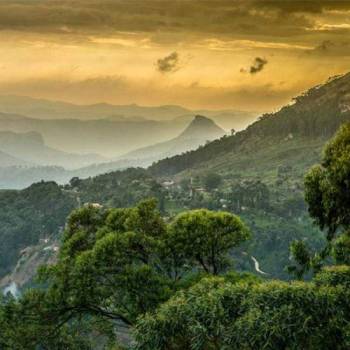 23D/22N
23D/22N
Best Of South India 22Night 23Days Tour ..
Bangalore - Hassan - Mysore - Srirangapatna - Kumarakom - Kochi - Kovalam - Alleppe..
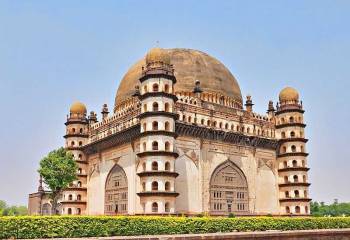 15D/14N
15D/14N
15 Days Karnataka Tour Packages
Hyderabad - Badami - Bangalore - Coorg - Gulbarga - Mysore - Hampi - Bijapur
 12D/11N
12D/11N
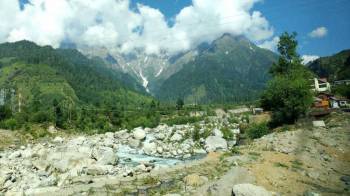 11D/10N
11D/10N
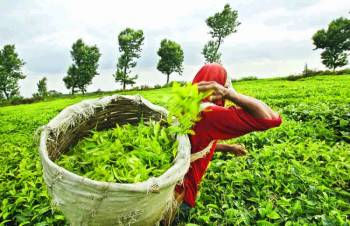 12D/11N
12D/11N
Assam Tea Heritage 11 Night 12 Days Tour
Itanagar - Dibrugarh - Jorhat - Guwahati - Kaziranga
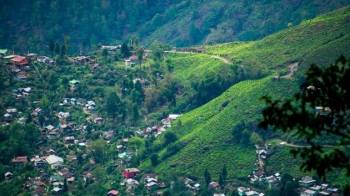 10D/9N
10D/9N
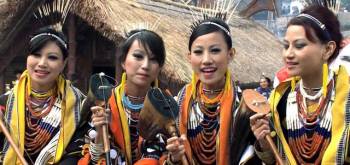 18D/17N
18D/17N
Dibrugarh - Jorhat - Guwahati - Dimapur - Kohima - Mokokchung
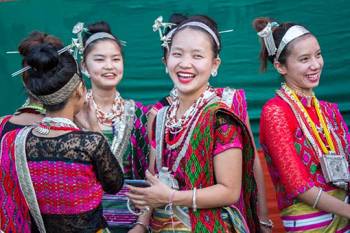 18D/17N
18D/17N
17Night 18Days Arunachal Cultural Tour
Itanagar - Bomdila - Dibrugarh - Guwahati - Tezpur - Tawang - Dirang - Sonitpur
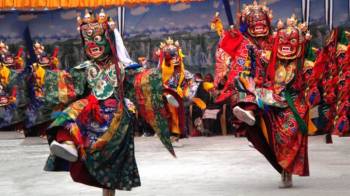 15D/14N
15D/14N
Dibrugarh - Jorhat - Guwahati - Gangtok - Ravangla - Dimapur - Kohima - Pelling - L..
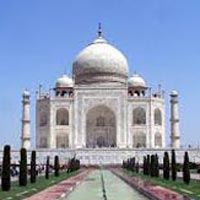 23D/22N
23D/22N
New Delhi - Jaipur - Nawalgarh - Mandawa - Bikaner - Jaisalmer - Osian - Khimsar - ..
 23D/22N
23D/22N
New Delhi - Amritsar - Dharamshala - Patnitop - Srinagar - Kargil - Leh Ladakh - Ma..
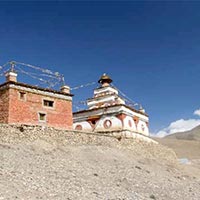 23D/22N
23D/22N
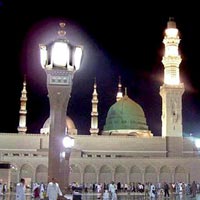 23D/22N
23D/22N
 23D/22N
23D/22N
 23D/22N
23D/22N
 23D/22N
23D/22N
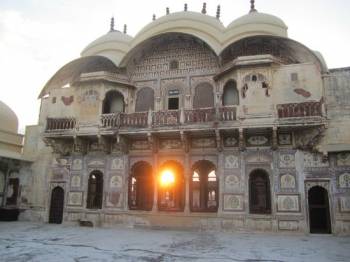 23D/22N
23D/22N
The Rural Tours of Rajasthan India
New Delhi - Samode - Nawalgarh - Khimsar - Jaisalmer - Jodhpur - Sirohi - Ranakpur ..
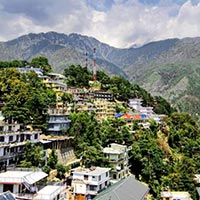 23D/22N
23D/22N
New Delhi - Manali - Kullu - Amritsar - Mcleodganj
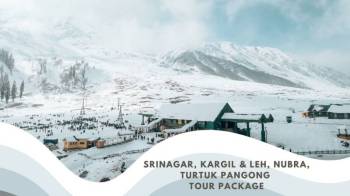 9D/8N
9D/8N
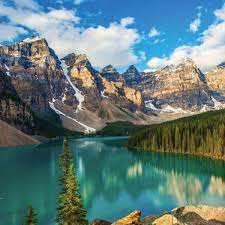 11D/10N
11D/10N
Himachal Pradesh Tour Package 10 Night -..
Dalhousie - Khajjiar - Kufri - Manali - Shimla - Dharamshala - Amritsar - Mcleodganj
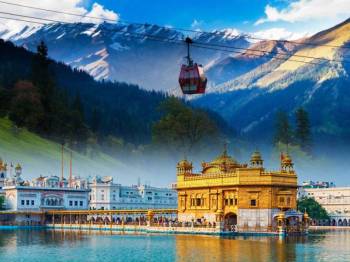 11D/10N
11D/10N
10Night Himachal Pradesh Tour Ex - Shimla
Dalhousie - Khajjiar - Kufri - Manali - Shimla - Dharamshala - Amritsar - Mcleodganj
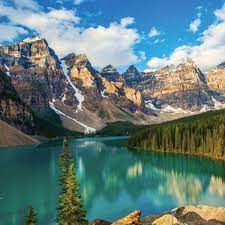 11D/10N
11D/10N
Himachal Pradesh Tour Package 10 Night -..
Dalhousie - Khajjiar - Kufri - Manali - Shimla - Dharamshala - Amritsar - Mcleodganj
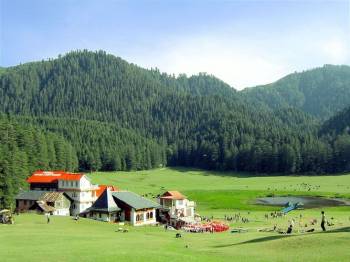 10D/9N
10D/9N
9 Night - 10 Days Himachal Pradesh Tour ..
Dalhousie - Khajjiar - Kufri - Kullu - Manali - Shimla - Dharamshala - Amritsar - M..
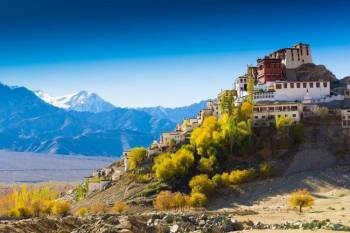 10D/9N
10D/9N
Jammu And Kashmir With Leh Ladakh Tour P..
Srinagar - Pahalgam - Leh Ladakh - Kargil - Gulmarg
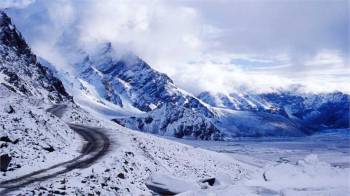 3D/2N
3D/2N
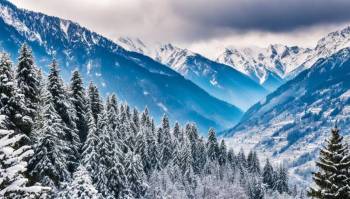 3D/2N
3D/2N
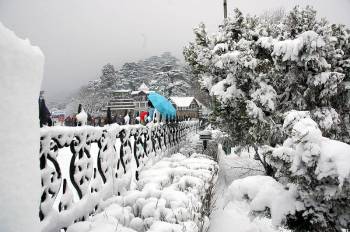 7D/6N
7D/6N